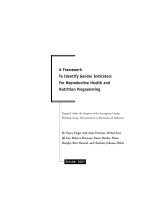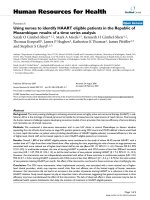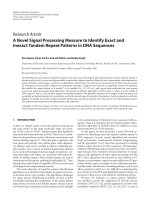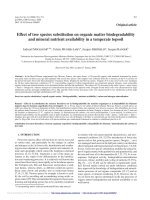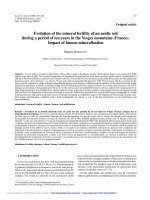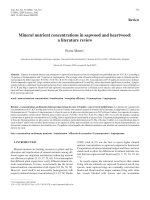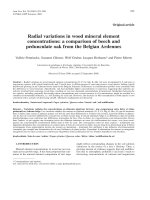Identify a mineral
Bạn đang xem bản rút gọn của tài liệu. Xem và tải ngay bản đầy đủ của tài liệu tại đây (5.15 MB, 76 trang )
Minerals and Rocks
Lecture Outline
What are minerals?
Common rock-forming minerals
Physical properties of minerals
Basic rock types
The rock cycle
Minerals
A mineral is a naturally occurring, solid
crystalline substance, generally inorganic,
with a specific chemical composition
Natural
Solid
Atoms arranged in orderly repeating 3D array: crystalline
Not part of the tissue of an organism
Composition fixed or varies within defined limits
Minerals are the “building blocks” of rock
Click to edit Master text styles
Second level
Third level
Fourth level
Fifth level
Large individual crystals (rare)
Mass of small grains: each is a crystal, but grown up against each other
Atomic Structure of Minerals
NaCl - sodium chloride
Halite
Chemical Bonds: Ionic
Electrical attraction between ions of opposite charge
Bond strength increases with the electrical charges of the ions
Bond strength decreases as the distance between the ions increases
Most minerals are this kind of compound
Ionic Bonding example:
halite
Cation
Na
+
Anion
Cl
-
Covalent Bonds:
Electron sharing
Generally stronger than ionic bonds (e.g., diamond)
Crystallization of Minerals
Need starting material with atoms that can come together in the proper proportions
Growth from a liquid or a gas
Time and space for crystallization
Appropriate temperature and pressure
Examples
Magma that has cooled below its melting point
Supersaturated solution --> precipitation
Crystallization of Minerals
Crystals begin as an initial “seed” - a microscopic crystal
Atoms keep being added in a 3D array, repeating the basic arrangement
Crystal faces are based on the array structure
Cations and Anions
Anions are typically large
Cations are relatively small
Crystal structure is determined largely by the
arrangement of the anions
Common cations and anions
Click to edit Master text styles
Second level
Third level
Fourth level
Fifth level
Radii given in angstroms; 10
-8
cm
Ions can be compound
So far, we’ve talked about individual atomic ions
Many common minerals are silicates
4SiO4
Complex ions act as a single
ion in forming crystal structure
Cation Substitution
Crystal structure determined by those large anions
Various cations can substitute for each other in many minerals
Same crystal structure
Different chemical composition
Click to edit Master text styles
Second level
Third level
Fourth level
Fifth level
Polymorphs
Minerals with the same composition, but different crystal structure.
Common Rock-Forming Minerals
Minerals fall into a small number of related “families” based mainly on the anion in them
Click to edit Master text styles
Second level
Third level
Fourth level
Fifth level
Silicates
Most abundant minerals in the Earth's crust
4Silicate ion (tetrahedron), SiO4
Quartz (SiO2), K-feldspar (KAlSi3O8), olivine ((Mg, Fe)2SiO4), kaolinite
(Al2Si2O5(OH)4)
Quartz (SiO2)
Click to edit Master text styles
Second level
Third level
Fourth level
Fifth level
Silicate structure
Most of the most common rocks in the crust are silicates
Silicate tetrahedra can combine in several ways to form many common minerals
Typical cations:
+
+
+
2+ 3+
2+
K , Ca , Na , Mg , Al , Fe
Different numbers of oxygen ions are shared among tetrahedra
Carbonates
2Cations with carbonate ion (CO3 )
Calcite (CaCO3), dolomite (CaMg(CO3)2), siderite (FeCO3), smithsonite (ZnCO3)
Make up many common rocks including limestone and marble
Very important for CCS!
Calcite (CaCO3)
Click to edit Master text styles
Second level
Third level
Fourth level
Fifth level
Click to edit Master text styles
Second level
Third level
Fourth level
Fifth level
+
2+
CaCO3 + 2H = Ca + CO2 + H2O
Click to edit Master text styles
Second level
Third level
Fourth level
Fifth level
Smithsonite (ZnCO3)

